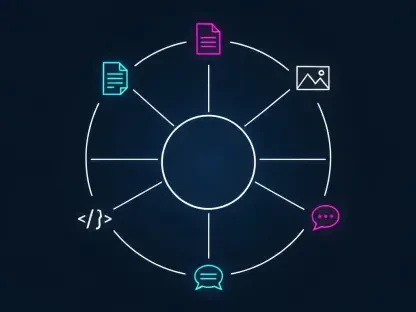Oscar Vail is a noted expert in technology, deeply ingrained in the latest advancements in fields such as quantum computing, robotics, and open-source projects. Today, he shares his insights on how artificial intelligence is revolutionizing the email marketing landscape by making personalization more effective and scalable. This interview explores the nuances of AI in crafting emails that feel personal, optimizing timing, and enhancing content, thereby increasing engagement and fostering better connections with customers.
How does AI enhance the personalization of emails for marketers?
AI transforms the way emails are personalized by making them feel bespoke without the need for manual crafting. By analyzing data like past clicks and purchases, AI can predict what recipients might enjoy or find useful next. This predictive ability ensures that each email is relevant, enhancing engagement and creating a more personalized experience for every user.
Can you explain how AI uses past actions like clicks and purchases to predict consumer preferences?
AI leverages historical data to understand consumer behavior patterns. It looks at what users have clicked on or bought previously, and from these actions, AI draws insights to predict future interests. These insights allow marketers to tailor emails that align with individual preferences, improving the likelihood of interactions and conversions.
In what ways does AI help with scaling email marketing efforts?
AI facilitates scaling by automating the personalization process. It eliminates the need to craft individual emails, instead creating highly tailored content en masse. This capability means marketers can reach a larger audience without losing the personal touch, allowing them to expand their reach significantly without additional resources.
What are the benefits of breaking an email list into groups, and how does AI assist in this process?
Segmenting email lists into specific groups helps in targeting messages more effectively. AI assists by analyzing user data to identify distinct audience segments based on behavior and preferences. This segmentation leads to more focused communication strategies, which in turn boost engagement rates and conversions.
How important is timing in email marketing, and how does AI optimize it?
Timing is crucial in email marketing because sending messages when recipients are most likely to engage can drastically increase open and click rates. AI enhances timing by analyzing user activity and sending emails at optimal times for each recipient, which ensures that emails arrive precisely when they’re most likely to be noticed.
How does AI contribute to creating more effective email content, especially subject lines?
AI tools can significantly enhance content creation by selecting subject lines that resonate with recipients. By analyzing previous email performance, AI identifies patterns in successful subject lines, enabling marketers to craft headlines that are more likely to capture attention. This data-driven approach results in higher open rates and improved overall performance.
What role does A/B testing play in email marketing, and how does AI enhance this process?
A/B testing is vital for determining what elements of an email resonate best with audiences. AI supercharges this process by rapidly testing multiple variations of an email and quickly identifying the most successful elements. It streamlines the trial-and-error process, providing data-backed insights to refine email strategies efficiently.
How can AI help in keeping email content fresh and relevant to changing customer interests?
AI can monitor shifts in customer interests over time, adapting content to reflect these changes. It analyzes engagement metrics and adjusts messaging strategies to maintain relevancy, ensuring that emails remain engaging and valuable. This adaptability reduces the risk of user fatigue and helps maintain a healthier subscriber list.
Why is it crucial to construct accurate audience groups for email marketing success?
Accurate audience segmentation is foundational to successful email marketing. By understanding and categorizing users based on their unique behaviors and preferences, marketers can send more targeted and effective communications. Precise segmentation leads to higher engagement rates, fostering stronger customer relationships and better marketing outcomes.
How often should marketers review and update their email segmentation strategies?
Regular review and updating of segmentation strategies are essential. Markets are dynamic, and audience preferences can shift over time. Continuous analysis ensures that segmentation remains relevant, allowing marketers to tap into evolving trends and preferences for enhanced campaign effectiveness.
What are some best practices for email capture and how do they integrate with segmentation strategies?
Effective email capture relies on optimized forms and enticing lead magnets. By aligning these practices with segmentation strategies, marketers can gather more qualified and interested leads. This integration ensures that new subscribers are immediately funneled into appropriate segments, setting the stage for personalized communication from the get-go.
How can marketers ensure their emails feel personal and resonate with individual preferences?
To create personal resonance, marketers should focus on tailoring content to reflect the interests and needs of each individual recipient. This involves leveraging data to understand what drives each user and crafting messages that speak directly to their preferences, thus fostering a direct and meaningful connection.
Why is understanding reader timing preferences essential, and how can AI improve this?
Understanding when readers are most engaged allows marketers to time their emails for maximum impact. AI enhances this by learning individual user habits and predicting optimal send times, ensuring messages are delivered when recipients are most likely to engage, effectively increasing the chances of them being read and interacted with.
How important is the tone and voice in email communication, and how can marketers choose the right one?
Tone and voice are pivotal in making a message resonate. They should reflect the brand’s personality and match the recipient’s expectations and preferences. To find the right tone, marketers should understand their audience and ensure consistency across all communications, which builds trust and recognition.
Why should email performance be tracked and what insights can marketers gain from metrics like opens and clicks?
Tracking email performance is crucial for understanding what works and what doesn’t. Metrics like open and click rates provide insights into what content resonates with readers, allowing marketers to refine and improve their strategies. This continuous feedback loop is key to optimizing campaigns for better engagement.
What should marketers do if they notice high unsubscribe rates?
High unsubscribe rates indicate a disconnect with the audience. Marketers should investigate potential causes, such as irrelevant content, poor timing, or inappropriate tone, and adjust their strategies accordingly. Testing new approaches and seeking feedback can help realign efforts with audience expectations, reducing churn.
How can content and tone evolve along a customer’s journey?
As customers progress through their journey, their needs and preferences change. Marketers should adjust content and tone to reflect these shifts, offering more value at every stage. By aligning communications with the customer’s evolving context, marketers can ensure relevance and maintain engagement.
What are some common elements to test in email campaigns, and why is experimentation important?
Testing elements like subject lines, call-to-action buttons, and layout can reveal what drives engagement. Experimentation is vital because it uncovers new opportunities for optimization that may not be initially obvious. Through consistent testing, marketers can continuously refine their strategies to achieve the best results.
Once a successful email strategy is identified, how can marketers build upon it?
Marketers can build on successful strategies by analyzing what worked and replicating those elements in new campaigns. They should expand on these insights, adapting them for different audience segments or introducing variations based on past successes, ensuring continued relevance and effectiveness.
Why is it important to align email sign-up forms with the brand’s tone and goals?
Aligning sign-up forms with a brand’s tone ensures a cohesive experience from the first interaction. Consistent branding across touchpoints helps set clear expectations, leading to better-qualified leads and fostering immediate trust, which can translate to long-term engagement.
How can marketers ensure their emails are mobile-friendly, and why is this important?
Ensuring emails are mobile-friendly is crucial given the prevalence of mobile device usage. Marketers should design with mobile in mind, using responsive layouts, concise content, and clear visuals. Mobile optimization prevents potential frustrations and enhances the likelihood of engagement across all devices.
How can automated emails be made to feel personal?
To keep automated emails personal, marketers should incorporate elements like dynamic content that adapts to user behavior and interests. Employing personal touches in language and addressing specific customer needs can make automated messages feel like they were tailored specifically for each recipient.
Do you have any advice for our readers?
Always keep the customer at the center of your strategies. Listen to what your data tells you, be willing to adapt, and strive to meet evolving expectations. By constantly fine-tuning your approach, you’ll not only enhance engagement but also build lasting relationships with your audience.









